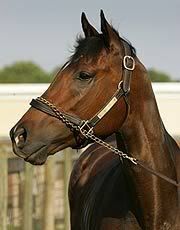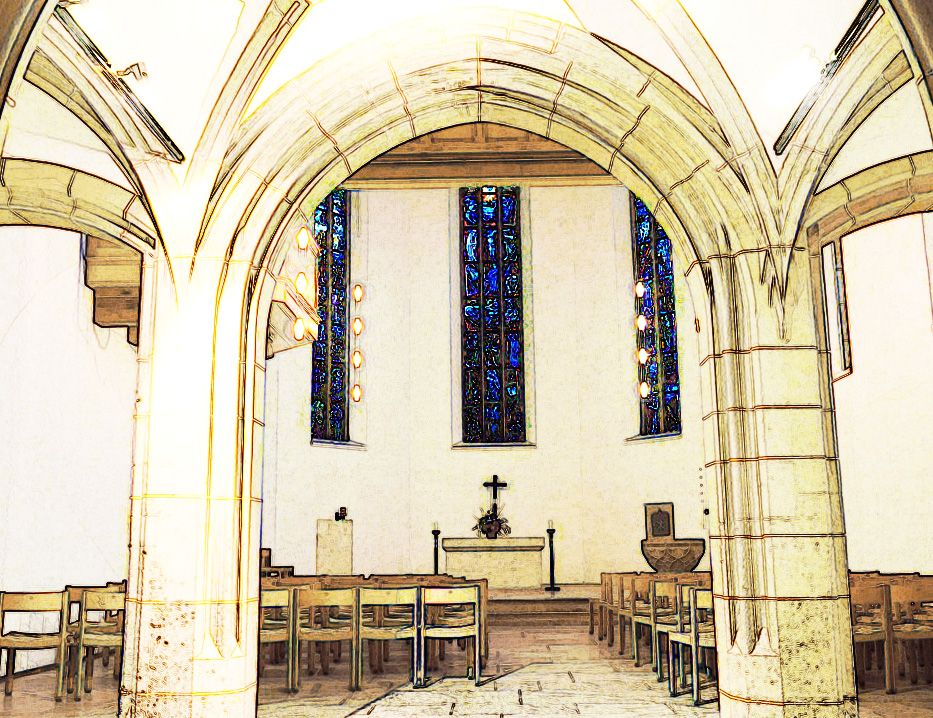 Yesterday, January 29th, was a deep blue Monday as we found out that Barbaro had been euthanized. Not only sports and racing enthusiasts, but virtually everyone had been following the story of the brave colt, the full-hearted winner by close to seven lengths of the 2006 Kentucky Derby, the 132nd Run for the Roses. For the past eight months Barbaro had experienced near-countless ups and downs while struggling fully to recover from the injury he sustained last May 20th at the start the Preakness, second of the Triple Crown races. Like a lot of animal lovers, I'm ambivalent about many aspects of horse racing, though one of my great-grandfathers was a jockey and I've been known to attend live meets at Suffolk Downs when I lived in Massachusetts and more locally at Del Mar, mainly to see the horses. But this is a theology blog, and I'm blogging to say with what unassailable spirit, what invincible heart and what indomitable life Barbaro inspired us! Heart and life and spirit are attributes of Divinity, and without a doubt, a spark of the Divine indwelt this magnificent Barbaro! And we have glimpsed the face of God, of the Divine in the compassion, care, love and willingness to suffer for the Beloved in Barbaro's owners, trainer, jockey, stable hands, veterinary team and plain everyday fans as they wished and willed the very best for their Beloved, their champion winner-horse. Our glances of God frequently are fleeting and ephemeral, but this one will stay with me, for one, and probably with many more. Martin Luther was very correct when he insisted the Risen and Ascended Christ indwells all creation, so let us all Celebrate Barbaro, who now runs free—Celebrate Life!
Yesterday, January 29th, was a deep blue Monday as we found out that Barbaro had been euthanized. Not only sports and racing enthusiasts, but virtually everyone had been following the story of the brave colt, the full-hearted winner by close to seven lengths of the 2006 Kentucky Derby, the 132nd Run for the Roses. For the past eight months Barbaro had experienced near-countless ups and downs while struggling fully to recover from the injury he sustained last May 20th at the start the Preakness, second of the Triple Crown races. Like a lot of animal lovers, I'm ambivalent about many aspects of horse racing, though one of my great-grandfathers was a jockey and I've been known to attend live meets at Suffolk Downs when I lived in Massachusetts and more locally at Del Mar, mainly to see the horses. But this is a theology blog, and I'm blogging to say with what unassailable spirit, what invincible heart and what indomitable life Barbaro inspired us! Heart and life and spirit are attributes of Divinity, and without a doubt, a spark of the Divine indwelt this magnificent Barbaro! And we have glimpsed the face of God, of the Divine in the compassion, care, love and willingness to suffer for the Beloved in Barbaro's owners, trainer, jockey, stable hands, veterinary team and plain everyday fans as they wished and willed the very best for their Beloved, their champion winner-horse. Our glances of God frequently are fleeting and ephemeral, but this one will stay with me, for one, and probably with many more. Martin Luther was very correct when he insisted the Risen and Ascended Christ indwells all creation, so let us all Celebrate Barbaro, who now runs free—Celebrate Life! Post-blog: I completely concur with the statement from Churchill Downs, which included words from Churchill Downs' President and CEO, Robert L. Evans:
We salute the Jacksons, Dr. Richardson and the entire staff at the New Bolton Center for the love, dedication and compassion they displayed in their long battle to nurse Barbaro back to health. It is our hope that the incredible effort to save Barbaro's life, and the lessons learned and discoveries made during that work, will lead to greater understanding and new treatments for ailments such as laminitis and major injuries to the leg and foot. It is our fondest hope that in years to come many other horses will benefit from the work performed at the New Bolton Center during Barbaro's fight to recover. That would be a wonderful addition to the legacy of a brilliant horse that was at his best on Kentucky Derby Day, when the entire world was watching him on racing's biggest and brightest stage.A reflective obit from NPR, "Legendary Racehorse..."
Preakness Day in May 2007 at Pimlico also will feature the first running of the Barbaro Stakes—the Barbaro actually will be the Sir Barton Stakes renamed. Sir Barton was the first horse ever to win racing's Triple Crown of Kentucky Derby, Preakness Stakes and Belmont Stakes - in 1919; the Sir Barton Stakes debuted at Pimlico in 1993.

